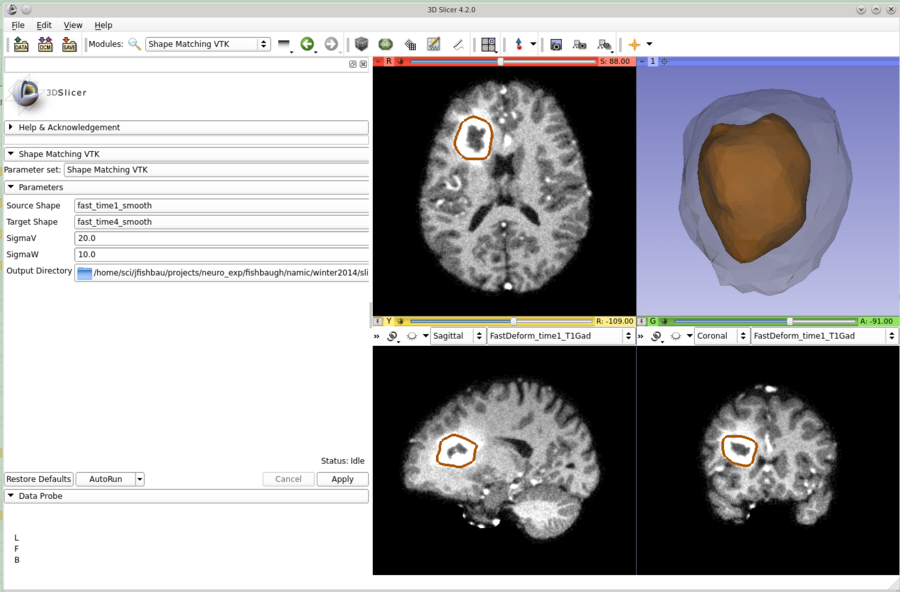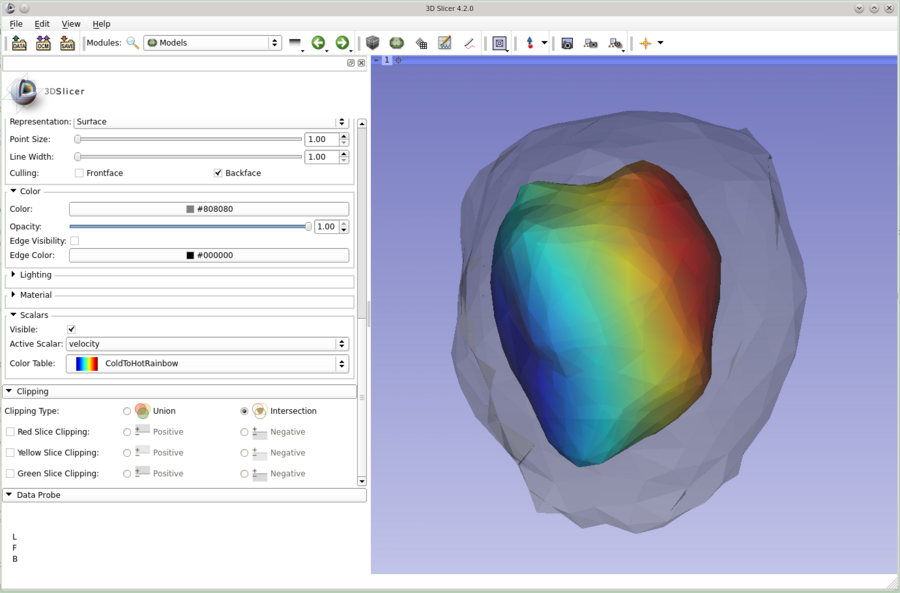Difference between revisions of "2014 Project Week:Shape Registration and Regression"
From NAMIC Wiki
Jfishbaugh (talk | contribs) |
Jfishbaugh (talk | contribs) |
||
| Line 27: | Line 27: | ||
<div style="width: 27%; float: left; padding-right: 3%;"> | <div style="width: 27%; float: left; padding-right: 3%;"> | ||
<h3>Progress</h3> | <h3>Progress</h3> | ||
| − | + | I spoke with several people about input/output and CLI/extension. It seems [[2014_Project_Week:MultidimensionalDataSupport|multidimensional data ]] will be available soon as the natural output for shape matching and regression. | |
</div> | </div> | ||
</div> | </div> | ||
Revision as of 15:51, 10 January 2014
Home < 2014 Project Week:Shape Registration and RegressionKey Investigators
- Utah: James Fishbaugh, Guido Gerig
- Iowa: Hans Johnson
Project Description
Objective
Integrate shape matching and shape regression tools into Slicer as command line applications.
Approach, Plan
The first step is to integrate shape matching/registration into Slicer as a command line application. Some key issues to resolve:
- What input parameters should be made available to user?
- Input/Output format: Paths to data or Slicer Models?
- Output is a time series of surfaces, which is not easily explored in Slicer. Should output be simplified? Output could be the deformed source and/or the deformation field that transforms source to target.
- Dependencies on external libraries and licensing issues.
Progress
I spoke with several people about input/output and CLI/extension. It seems multidimensional data will be available soon as the natural output for shape matching and regression.
Summary




